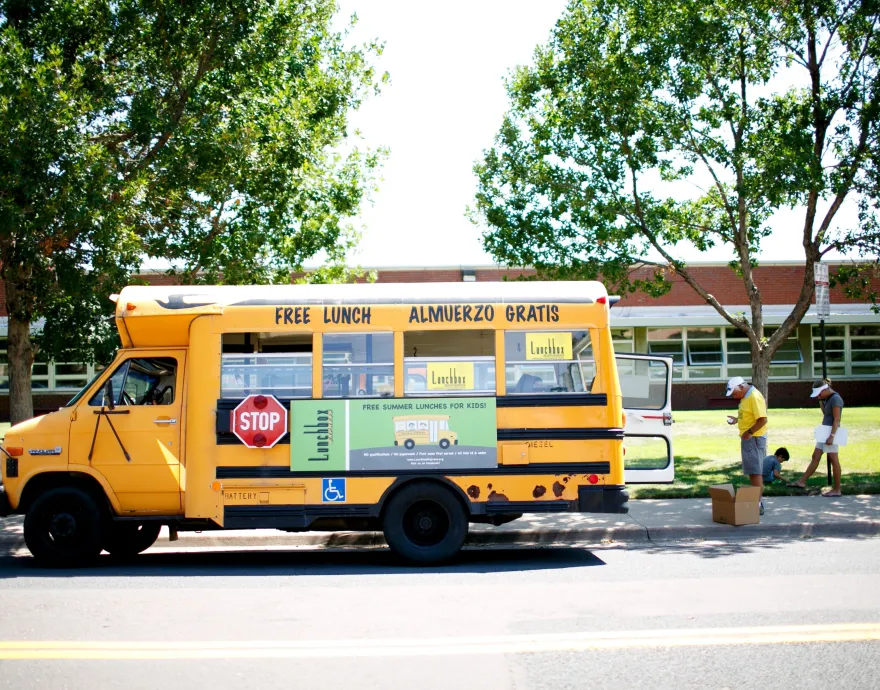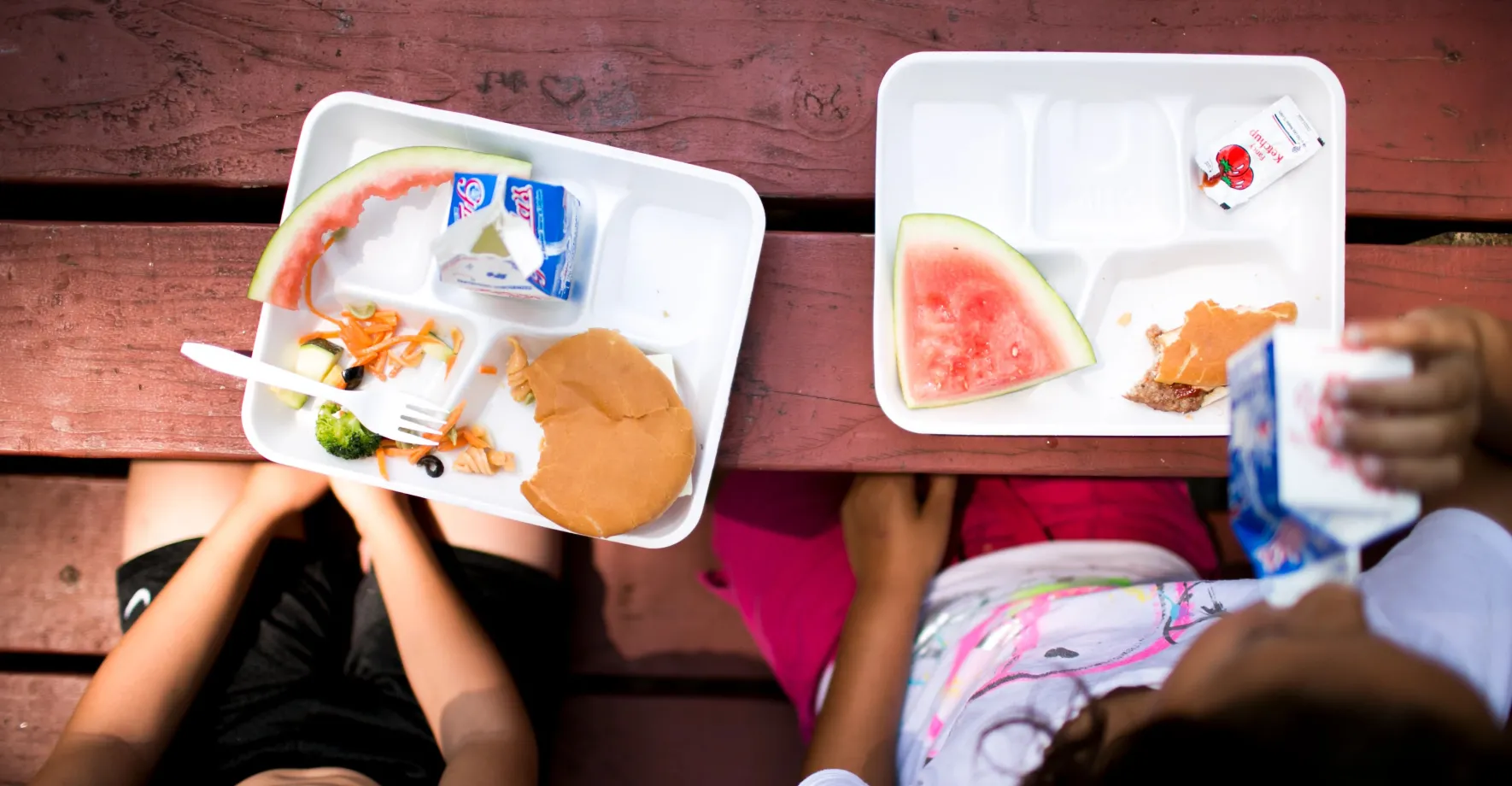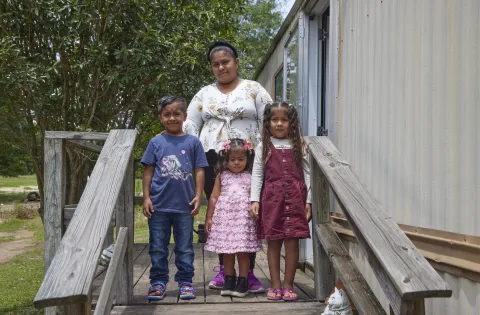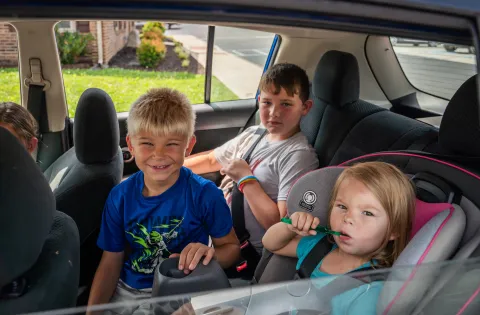There are 13 million children living with hunger in the United States today.
That’s a terrible number to confront - especially in a country as wealthy and generous as ours. Worse, it’s a number that rose sharply in the past few years, after a decade of steady progress.
"Our students may get a bag of Doritos or a Pop-Tart, and that might be their meal," said Vicki Chafin, who works in a school cafeteria in Bristol, Va. "The only hot meal that they get are the ones that we have at school. They are hungry.”

Poverty and Childhood Hunger
We’ve been working to help communities, schools and families feed children for many years through the No Kid Hungry campaign. And we’ve learned a lot about what works, from school breakfast programs to benefits to help families buy groceries during the summer months.
But more and more we understand that ending childhood hunger in this country requires addressing the underlying cause: poverty.
American poverty increased sharply last year, from under 8% to well over 12%, when we chose to cut off successful pandemic-era programs that helped low-income families.
That’s nearly 40 million Americans without enough to get by. And that accounts only for families living below the poverty line - about $30,000 a year in income for a family of four. Tens of millions more make more than that, but still struggle.
So it’s no surprise that children go hungry.
"Hunger is just a symptom of poverty," said Mike Curtin, the chief executive officer at DC Central Kitchen, a No Kid Hungry partner that provides a range of meals programs in Washington DC. "Poverty is the real issue that we need to talk about in this country, we need to fix in this country, we need to, to admit exists in this country.”
Housing, transportation, groceries - it costs a lot to take care of a family. When parents simply don’t make enough money, there often isn’t a sufficient amount left over after paying the bills to afford healthy food. Plenty of research shows that even a relatively small unexpected cost - like a $400 doctor’s bill - can hit a working-class family budget like a wrecking ball.
On top of this, Black and Hispanic families are more likely to face additional unfair barriers, like less access to good-paying jobs and other opportunities. Jobs that pay enough for a family to live a stable, middle-class life have become much rarer over the past two decades - for everyone.
“I’ve seen the need for food grow substantially in the past 15 years among our students,” said Randy-Sue Herman, director of school nutrition services in Louisa County, Va. “Right now the number of families living with food insecurity is the highest it’s ever been.”

How Do We Fix This?
What can be done? Is this merely the cruel nature of American life today - that millions of children must live with hunger?
Absolutely not.
In many ways, this is a deliberate decision we are making as a country, through the policies we choose - from housing to the minimum wage to our tax system. But we can make different choices, ones that put kids and families first.
"The fundamentals of American society, especially the job market and the housing market, are breaking down for a lot of Americans today," writes Matthew Desmond in his book 'Poverty, by America'. "Unions don’t have a lot of power, and wages are stagnant. For a man without a high-school or college degree, his wages are less today than they would have been fifty years ago. So that means we have to spend more to stay in the same place. It means we need different policies, policies that cut poverty at the root."
We saw during the COVID pandemic what was possible. Americans came together, not just at the community level to support their neighbors, but at the federal level, where Republicans and Democrats teamed up to pass laws that drove poverty and hunger down sharply - even in a time of crisis.
Some of the most effective:
- The enhanced Child Tax Credit provided a monthly check that helped families get by. Thanks in large part to that program, child poverty fell by an incredible 46% in 2021.
- An emergency grocery benefit program, along with more funding for SNAP, meant that struggling parents could afford the food their children needed. As a result, we saw food insecurity go down, even when many low-income Americans were out of work or facing reduced hours.
As the pandemic waned, though, lawmakers in Washington decided to stop investing in these programs. As a result, the number of children facing hunger rose dramatically.
But nothing is stopping us from doing these things again tomorrow.
And if we do? Children in communities across America will be able to grow up healthy, happy and strong. What could be more important than that?
Learn more about the ways you can help hungry kids or make a donation today.


